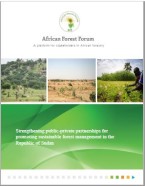After the independence of South Sudan taking about two thirds of the former ‘united Sudan’ forests and against a background of increasing human and livestock population pressure on forest resources, the forest situation in the Republic of Sudan (referred to in this document as Sudan) is pretty bad, and the country is now considered among the least forested countries in Africa. Against this background, and in spite of its important role in maintaining agricultural productivity and providing the firewood and charcoal needs for about 75% of the Sudan’s population, and its potentials for meeting a significant part of industrial wood and non- wood forest products (NWFP’s) for present and future needs, the forestry sector in the country has been seriously neglected and under- funded.

